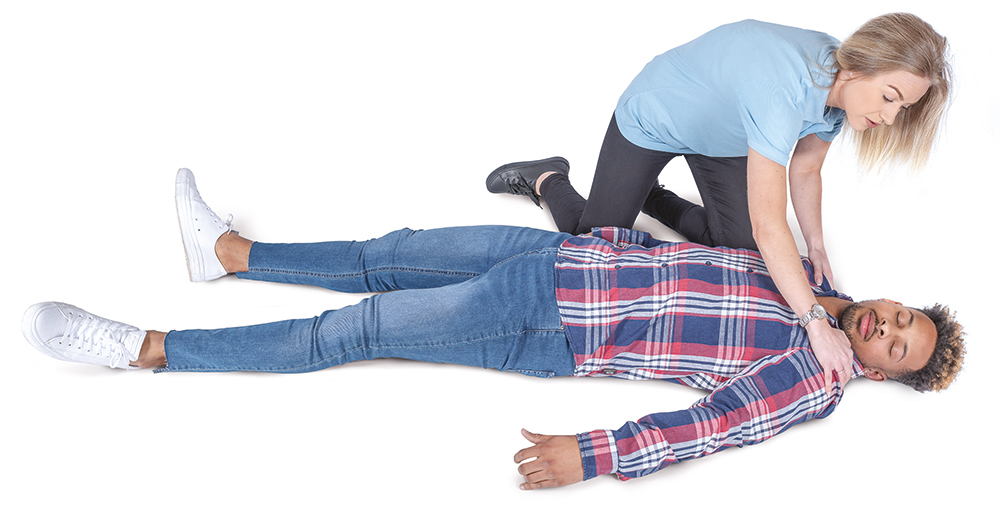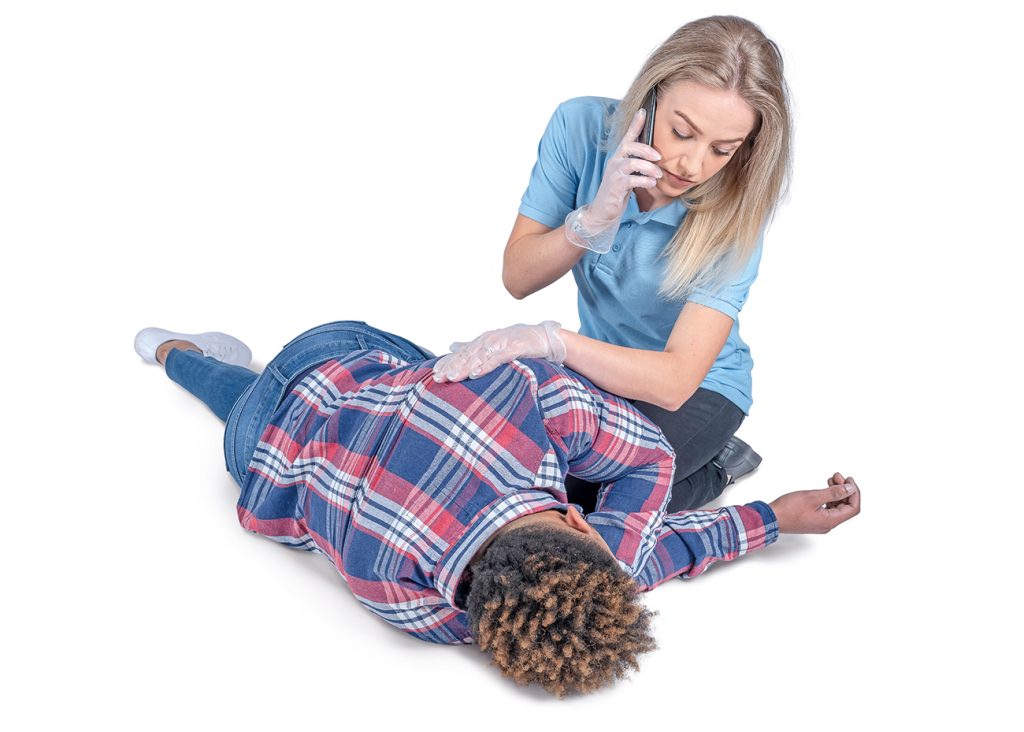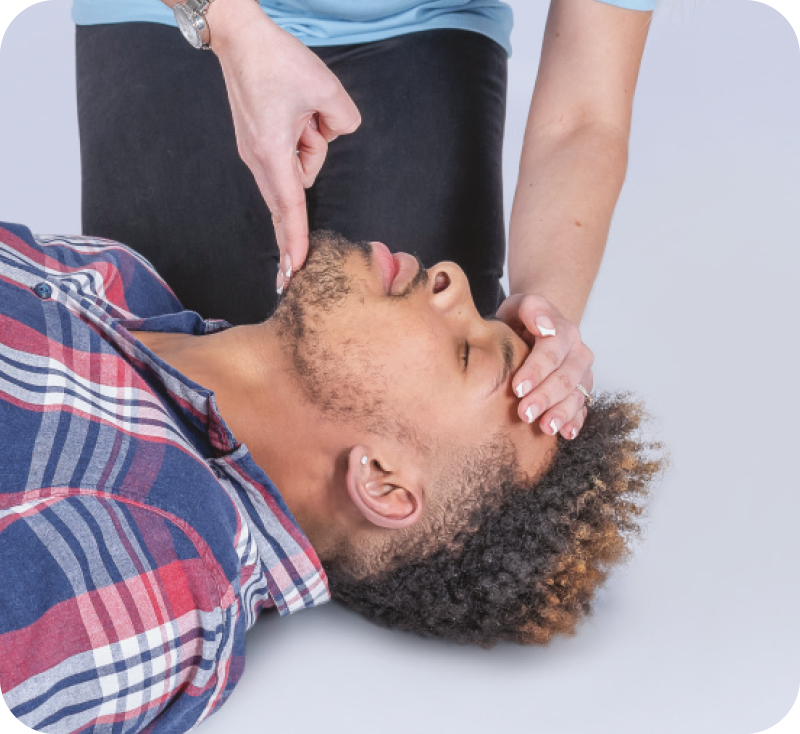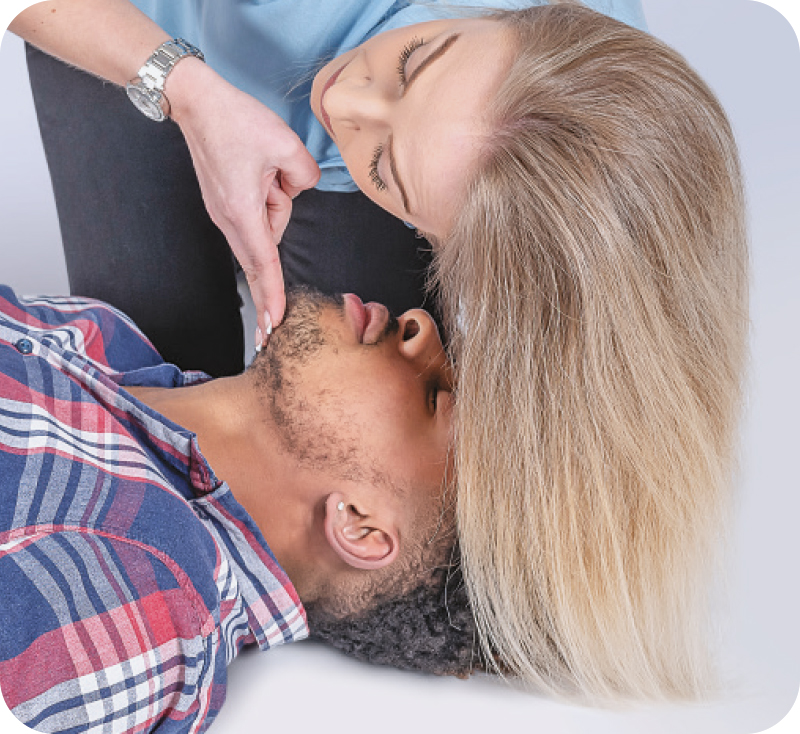DR ABC
Irrespective of the incident you are confronted with, you must carry out an initial assessment of the situation including your casualty. This is popularly known as the primary survey. The contents of this survey can be remembered easily by using the mnemonic DR ABC.
DANGERS
The area must be safe before you offer your casualty any treatment. Safe for you primarily, not forgetting any bystanders and of course your casualty.
RESPONSE
Approach the casualty, ideally from their feet. This reduces the risk of the casualty hyper-extending their neck should they be responsive.
You can perform a responsive check by using the AVPU scale.
- Alert – If they are fully responsive ascertain the extent of their injury and deal with it appropriately.
- Voice – “Are you all right?”
If they are not alert see if they will respond to a voice command.

- Place your hands on their shoulders and gently shake them.
If they don’t respond to a voice command try shaking them gently by the shoulders.
NB: do not shake them if you suspect a spinal or head injury.
The casualty who is unresponsive and not breathing normally is in cardiac arrest and requires CPR.
Immediately following cardiac arrest blood flow to the brain is reduced to virtually zero, which may cause seizure-like episodes that could be confused with epilepsy.
You should be suspicious of cardiac arrest with any casualty who presents seizure-like symptoms and carefully assess whether they are breathing normally. - Unresponsive – If there is no response at all, they must be deemed as being unresponsive.
If your casualty responds, leave them in the position in which you find them providing there is no further danger. Try to find out what is wrong with them and treat accordingly. Call for professional medical help if it is needed and reassess them regularly. If you are on your own, you should shout for help. Ideally you should never leave your casualty on their own.
A bystander can be a great benefit to you by:
- Calling for an ambulance
- Fetching the first aid kit and defibrillator if you have one
- Helping you if they are trained to do so
- Managing crowds and hazards
- Consoling relatives and friends
- Cleaning up
- Supporting you

AIRWAY
Turn the casualty onto their back and open the airway using the head tilt and chin lift method:
- Place your hand on their forehead and gently tilt their head back
- With two fingertips under the point of their chin, lift the chin to open the airway
- Be careful not to press on the fleshy part under the chin as it could restrict the airway
Support their head in this position in order to perform a breathing check.

BREATHING
Look, listen and feel for normal breathing for no more than 10 seconds.
- Look for chest movement
- Listen at their mouth for breath sounds
- Feel for air on your cheek
In the first few minutes after cardiac arrest, a casualty may be barely breathing, or taking infrequent, noisy, gasps. This is often termed agonal breathing or gasping, and must not be confused with normal breathing. If you have any doubt whether breathing is normal, act as if it is not normal and prepare to commence CPR.

CPR FOR A NON-BREATHING CASUALTY
If your casualty is not breathing normally an ambulance must be summoned immediately. Lone rescuers should utilise the speaker function on their phone when making this call.
If you have a bystander at hand, ask them to make this important call so that you can commence cardiopulmonary resuscitation (CPR) without delay.
If available, you can ask your bystander to fetch an Automated External Defibrillator (AED) and first aid kit.
If your casualty is breathing normally and has no major physical trauma, they should be placed in the recovery position and an ambulance called.
If your casualty has sustained physical trauma the injuries should be treated accordingly and the casualty left in the position found. However, if you believe their airway is at risk the recovery position should be used.
Ensure that you monitor the casualty’s breathing whilst waiting for the ambulance.
If you are unsure about the extent of the injury you should perform a top-to-toe survey.